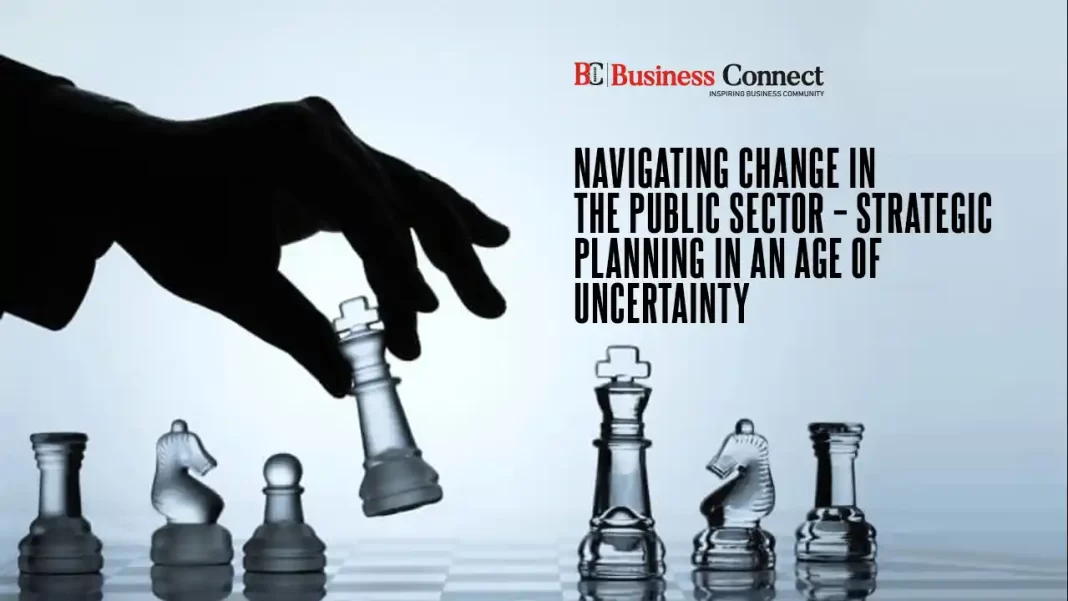Public sector organisations across the globe are facing a period of profound transformation. From evolving citizen expectations and budgetary constraints to geopolitical instability and rapid digitalisation, the operating environment has become more complex than ever. Navigating this change requires more than policy reform or increased funding — it demands a shift in how government institutions plan, deliver, and measure their services.
Strategic planning has always played a role in public sector management. But in today’s climate, strategy needs to be more than an annual document — it must be a living process, built on data, stakeholder engagement, and the flexibility to adapt in real time.
The New Normal of Constant Disruption
Crises are no longer isolated events. Public institutions now operate under the constant shadow of global shocks — whether it’s a health emergency, energy crisis, or economic downturn. At the same time, the long-term pressures of climate change, demographic shifts, and digital transformation are reshaping the fundamentals of governance.
These overlapping challenges have created a new normal, where public bodies must:
- Make faster, more informed decisions under pressure
- Deliver services in a multi-channel, digital-first environment
- Rebuild public trust amid rising misinformation and polarisation
- Manage talent shortages while meeting complex operational goals
The pace and breadth of change mean that reactive approaches are no longer sufficient. Strategy must be forward-looking, evidence-based, and able to guide delivery even as external circumstances evolve.
Embracing Agility in Strategic Planning
Traditional planning cycles often struggle to keep up with the speed of change. In response, many public sector organisations are moving toward more agile models of strategy development and execution.
Key features of agile public planning include:
- Regular review and iteration, rather than rigid multi-year plans
- Cross-functional collaboration across departments and agencies
- Use of real-time data and scenario planning to inform decision-making
- Stakeholder feedback loops to ensure services align with real needs
This approach allows public bodies to respond to emerging issues without losing sight of long-term objectives. It also fosters a culture of continuous learning and improvement — something critical in today’s fast-changing environment.
The Strategic Role of Data and Digital
Digital transformation has moved from being a back-office function to a central pillar of public strategy. Technology is now the key enabler of everything from service delivery and citizen engagement to financial oversight and policy evaluation.
To make the most of this shift, organisations must:
- Integrate digital infrastructure across silos to support seamless services
- Build data governance frameworks that protect privacy and ensure ethical use
- Develop internal capability to analyse and act on real-time insights
- Invest in digital inclusion to prevent widening access gaps
Digital tools don’t replace strategic thinking — they enhance it. Done right, they allow public leaders to understand their communities better, allocate resources more effectively, and deliver services that truly make a difference.
Talent and Capacity Building
No strategy is effective without the people to carry it out. Public sector organisations face mounting pressure to attract, retain, and empower skilled professionals, especially in areas such as data analysis, procurement, and digital innovation.
To build long-term capacity, organisations should focus on:
- Leadership development and strategic training across all levels
- Workforce planning that anticipates future needs and skills
- Creating flexible and inclusive working environments
- Aligning performance measurement with service outcomes, not just processes
Capacity building is not just about recruitment — it’s about creating an ecosystem where talent can thrive and innovation can take root.
Collaboration Across Boundaries
Modern public challenges rarely fit neatly into a single department or level of government. From housing and healthcare to climate resilience and digital access, the most pressing issues demand integrated responses.
This makes collaboration essential:
- Between national and local government bodies
- With civil society, community groups, and private partners
- Across borders, particularly within regional or international frameworks
Strong partnerships can unlock new funding models, support innovation, and ensure that public services reflect the lived experiences of the people they serve.
In many cases, external government and public advisory services play a vital role in shaping these collaborations and building the governance structures needed to sustain them.
Resilience Through Strategic Discipline
In an age of uncertainty, resilience is the currency of good governance. But resilience doesn’t mean simply surviving — it means evolving. Public institutions that embrace strategic discipline are better equipped to absorb shocks, adapt to new realities, and maintain public trust.
This includes:
- Embedding risk management into planning and delivery processes
- Creating contingency plans that are regularly tested and updated
- Measuring performance based on long-term impact, not just short-term outputs
- Ensuring transparency and accountability throughout strategic change
Resilient organisations are those that understand their vulnerabilities, invest in their capabilities, and remain focused on their mission — even under pressure.
Looking Ahead
Public sector transformation is not a trend — it’s a necessity. Strategy is no longer just about direction-setting; it’s about shaping institutions that are capable, connected, and responsive in a complex world.
By embracing agility, building capacity, harnessing digital tools, and seeking trusted external guidance where needed, public bodies can deliver more efficient, transparent, and citizen-centred services. Strategic planning is no longer a document — it’s a discipline. And it has never been more important.
Add Business Connect magazine to your Google News feed


